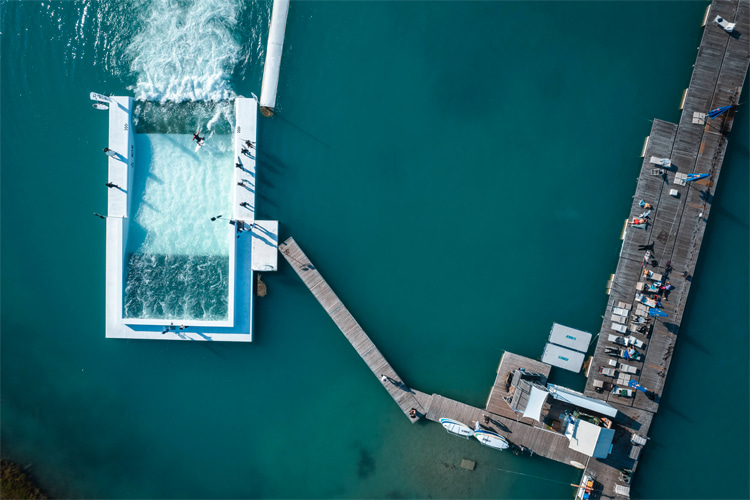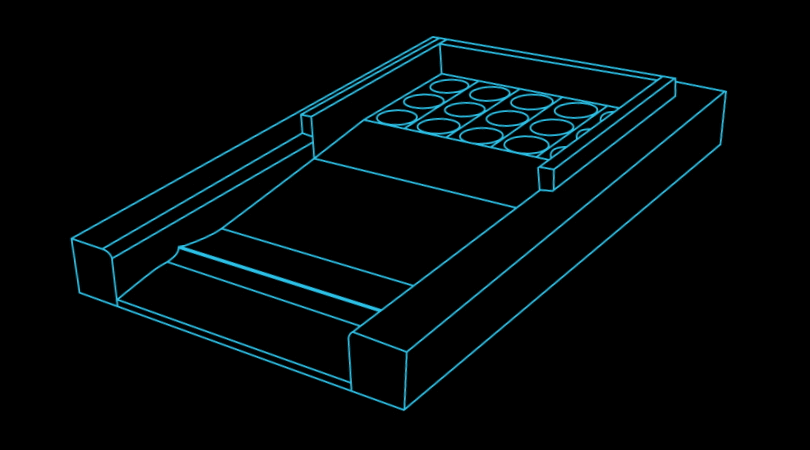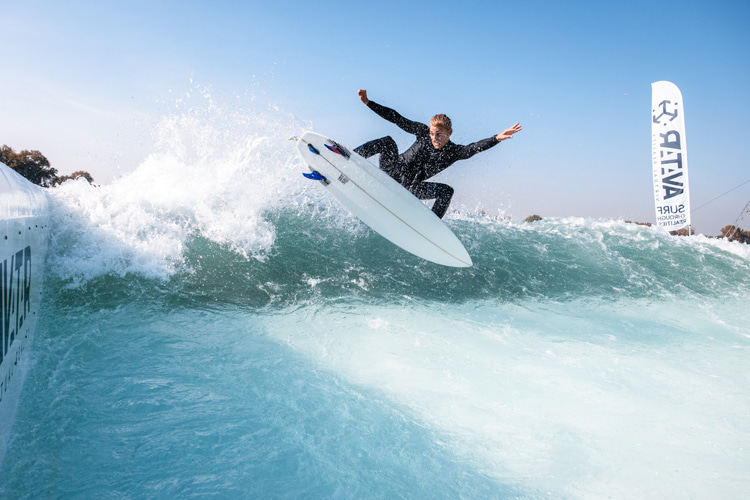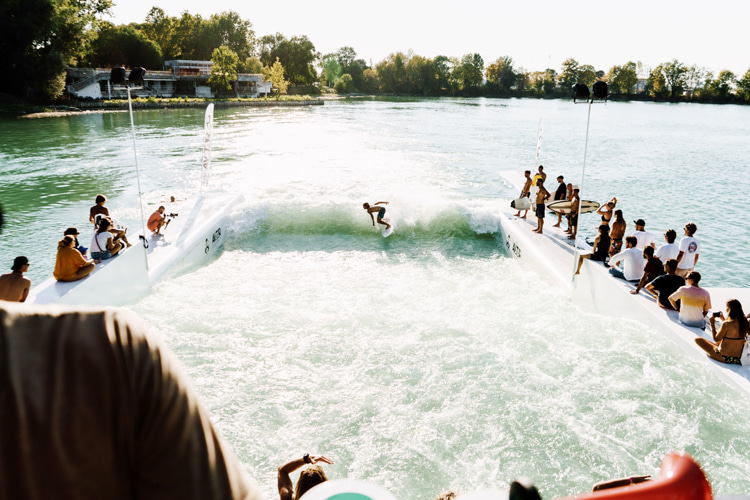The developers call it the most eco-friendly and efficient artificial deepwater wave on the planet. Here's what you must know about the UNIT Surf Pool.
Deep in the heart of Cologne, Germany, a remarkable innovation in artificial wave technology has taken root.
The UNIT Surf Pool, a standout invention in the realm of stationary waves, is making a splash globally.
Its creator, Johannes Degenhardt of UNIT Surf Pool GmbH, has developed a unique concept that recreates an authentic deepwater surfing experience, whether near or far from the ocean.
This technology has the potential to revolutionize the surf industry thanks to its uniqueness and plug-and-play formula.
However, their expertise was imported from a decade of designing features and obstacles for wake parks and cable parks.

The Concept
The UNIT Surf Pool is the epitome of an eco-friendly and energy-efficient design.
It creates a powerful and endless deepwater wave that can be installed virtually anywhere on the planet.
The wave's height is easily adjustable, making it suitable for all ages and skill levels, from first-time beginners to highly skilled professionals.
It is an authentic wave that can be ridden with any surfboard equipped with fins, and the skills practiced here can be applied to ocean surfing.
This is not a sheet wave like the Flowrider - it's a deepwater standing/stationary wave.
It requires less energy to create a larger wave, producing an open wave shape with a surfable face up to six feet (1.8 meters) high.
This wave allows for massive bottom turns and maneuvers, making it an ideal environment for training and technical progression.
The technology evolved around the concept of the hydraulic jump.

The Hydraulic Jump
The hydraulic jump is a fascinating fluid dynamics phenomenon that has intrigued scientists for centuries.
Picture water rushing from a higher point, only to abruptly slow down, causing it to spread out.
This transformation is the hydraulic jump in action. It's all about the shift from a supercritical flow to a subcritical one.
In a supercritical flow, water moves rapidly, able to override any external influences due to its high speed and energy.
But when the water encounters an obstruction or changes in slope, it's forced to slow down and rise, entering a subcritical flow state.
This results in a higher, slower, circular movement.
What makes this not just fascinating but also practical is its applications.
Engineers use hydraulic jumps to manage the energy of water in dam spillways, reducing potential damage. Now, they're doing it in wave pools, too.
The hydraulic jump turns a fast, turbulent flow into a slower, calmer one, preventing structural erosion and damage.
Though it may appear as simple as water pouring from a tap, the hydraulic jump forms an integral part of fluid dynamics studies and has crucial practical uses.

Floating or Embedded
There are two ways the UNIT Surf Pool can be installed - floating or embedded.
The floating version is suitable for a water body at least 5 meters deep, at least 150 meters long, and 50 meters wide.
It also has no construction costs, zero water consumption, and allows surfers to paddle back into the wave, like in real ocean conditions.
Also, the water movement generated by the sports structure increases circulation and enhances water quality in lakes, resulting in cleaner waterways.
The embedded version is a fixed platform that requires a basin that is 36 meters long and is great for urban areas, private residential areas, or sports arenas.
Both models range in wave width from 8 to 50 meters, and thanks to their modular construction, they are expandable in increments of two meters.

Rapid ROI
The floating wave pool can be installed in two weeks and enables a quick return on investment (ROI).
The cost of a UNIT Surf Pool varies from $1-10 million, depending on the size and type of construction.
The structure is made from durable steel and can sit in saltwater or freshwater.
The surrounding walkway allows the presence of spectators in competitions and brand activation events.
It can be a valuable investment for existing watersports venues, shopping malls, residential communities, and even hotels.
The fact that it requires nearly no maintenance and has low operating costs means that it can be quickly monetized.
Riders can book their surf slots all year round, and the structure holds up to 15 participants per session.
An Expanding Network of Pools
The first UNIT Surf Pool was deployed in a lake in Langenfeld, near Cologne, in Germany, in 2018.
One year later, the company installed another one in Milan, Italy.
After the first two successful deepwater wave structures, the technology received international attention and exported the concept overseas.
UNIT Surf Pool is currently building new rideable waves in the United States, Mexico, and Europe.
